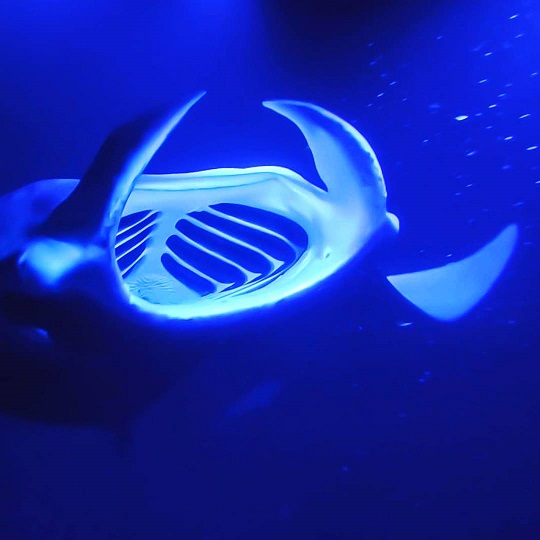Tarikregad for Animal Behavior Corner on the behavior of manta rays. Looking for a memorable vacation water activity? Join us on the Hoku Nui and sail out to Manta Ray Village for the best manta ray tour and float above the beautiful and graceful manta rays for an experience you’ll never forget.
Manta rays are some of the most majestic creatures in the ocean. Known for their wide wingspans and docile temperaments, manta rays have long captivated researchers and marine biologists alike with their unique behaviors.
While much is still to be learned about their behavior and social dynamics, recent studies have shed light on some of the fascinating ways manta rays interact and survive in our oceans.
In this article, we will take a closer look at manta ray behavior and investigate different aspects such as migration patterns, diet, and social interaction. We will also explore the unique relationship between manta rays and humans in certain areas of the world.
1. Manta Ray Physical characteristics
Manta rays are majestic creatures of the sea, and their physical characteristics make them both beautiful and unique. There are two species of manta ray: the reef manta ray (Mobula alfredi) and the giant oceanic manta ray (Mobula birostris).
These large rays have a wide range of physical traits that differentiate them from other species.
The most notable is their majestic flat-shaped body, which resembles a large bird due to its long wingspan and sweeping tail.
Manta rays typically measure anywhere between 16.4-23 feet (5-7 meters) in width. They have triangular-shaped pectoral fins which span nearly as wide as their disc-shaped bodies.
Additionally, they feature long whip-like tails and horn-like cephalic fins on either side of their heads that help direct food into their mouths when they feed.
Manta Rays also have an extremely large eye size compared to other species of fish; they use these eyes to help search for food sources in their natural habitat.
Manta Ray Diet
Manta rays diet consists primarily of plankton, which they filter from the water using specialized gill rakers. These rakers act like a sieve, allowing the manta ray to take in small organisms such as krill and shrimp while expelling the unwanted water.
In addition to plankton, manta rays may also consume small fish and squid when they can find them.
Manta rays have adapted their feeding habits to suit their environment; they generally feed in shallow waters near coral reefs or sandbanks where there is more food available than in deeper waters.
They will swim with their mouths open and filter out whatever happens to be swimming by, which makes it easier for them to capture prey. Some even venture into deeper water at night if conditions are favorable for finding food.
Manta Ray Habitat
Manta rays inhabit tropical and temperate waters around the world. These beautiful creatures typically live in shallow lagoons, coral reefs, estuaries, and coastal areas. Manta rays prefer living in warm waters with ample food sources, making them perfect for many different habitats.
Manta rays enjoy living among coral reefs and may even use the reef structures as protection against predators.
They also feed on various types of plankton such as krill, copepods, and jellyfish that can be found among these reefs.
In addition to their preferred habitat of shallow lagoons, manta rays have been known to venture out into deeper water columns in search of food or when seeking refuge from strong currents or storms.
Manta Ray Mating
The mating season for manta rays varies depending on the manta ray’s location. They will come together in large numbers to create mating aggregations or “mating balls.”
During these congregations, it’s common to see the males circling and chasing females trying to grab their pectoral fins with their mouths while making bubble trails behind them.
This type of courtship behavior lasts up to 30 minutes before one of the mating partners gets too tired to continue. The mating involves fertilization of the female cloaca through one of the male claspers.
Manta rays use an ovoviviparous form of reproduction, meaning they give birth to live young as opposed to laying eggs. The gestation period for a manta ray is around one year and can vary according to species.
During this time, the developing young manta ray will absorb nourishment from a yolk sac supplied by the mother. When born, baby mantas are usually between two and three feet in length and already exhibit their distinctive flattened body shape.
Manta Ray Social Behavior
Manta rays are highly interactive with each other, engaging in several behaviors that promote communication and potential bonding. Research has found manta rays to be quite active socially, with individuals gathering to form large groups or “feeding aggregations” at certain times of the year.
These gatherings can involve up to hundreds of manta rays, suggesting they have an innate understanding of the benefits associated with forming a larger group.
Additionally, manta rays have been seen displaying courtship behaviors such as rubbing against one another or swimming in circles around each other.
This further reinforces that they possess an advanced level of social intelligence which goes beyond instinctive needs such as food procurement and protection from predators.
3. Manta Ray Behavioral Adaptations
Manta rays are among the most unique and beloved creatures of the ocean. These majestic animals have a variety of fascinating behavioral adaptations which enable them to survive in their aquatic environment.
One adaptation that manta rays possess is their ability to move through the water with ease. As active swimmers, they possess an undulating movement pattern including horizontal side-to-side motions, as well as vertical undulations from top to bottom of the body.
This motion allows them to go fast enough while still conserving energy, making it easy for them to roam vast distances without tiring out.
Another adaptation manta rays have is their feeding behavior. They feed by using their cephalic fins which are large appendages on either side of the manta ray head that act like wings and scoop up plankton, small fish, and other tiny organisms floating near the surface.
4. Manta Ray Predators
Manta rays face threats from a variety of sources in the wild due to their size and vulnerability. Being at the top of their food chain does not make them immune to attacks from other species.
The primary predators for manta rays are sharks such as tiger sharks and bull sharks. In some areas of the world, orcas have also been known to hunt manta rays for food.
5. Manta Ray Fun Facts
Manta rays are one of the most interesting creatures in the ocean. These majestic and awe-inspiring fish have some amazing facts that many people don’t know about. Here are a few fun facts that everyone should know about manta rays.
1. Manta rays can grow to an impressive size of up to 23 feet in width and weigh up to 3,000 pounds!
2. Manta rays feed mainly on plankton but can also eat small fishes, squid, and crustaceans if they come across them.
3. Unlike other species of fish, manta rays don’t have scales but instead have smooth skin.
4. Manta rays are filter feeders meaning that they eat by swimming with their mouths open and taking in food from the water around them.
5. Manta rays are found in all tropical and temperate ocean waters but can be found at depths of 6600 feet!
6. Manta rays have a lifespan of up to 50 years.
7. Manta rays can travel up to 15 miles per hour!
8. These fish are very social creatures and are often seen swimming in groups.
9. Manta rays are named for their large and circular-shaped body that looks a lot like a blanket or cloak (Manta in Spanish or Portuguese).
10. Manta rays have a very light skeleton that allows them to float above the sea floor when they are at rest.
6. Manta Ray and Stingray Difference
Manta rays and stingrays are part of the same family, but they differ in many ways. Manta rays are larger than stingrays, measuring up to 23 feet in width, while stingrays can reach up to 6 feet wide.
In addition to size differences, manta rays and stingrays have different shapes. Manta rays have triangular-shaped fins at the front of their body and a tail that is much shorter than that of a stingray.
On the other hand, stingrays have flat bodies with long tails and wings that extend outwards from their round bodies.
7. Frequently Asked Questions About Manta Rays
Are Manta Rays Dangerous?
The answer is no. Despite their size and appearance, manta rays are harmless to humans. This gentle creature is more likely to flee than fight when presented with potential danger from a human or another animal.
Manta rays are very intelligent and have been observed exhibiting complex behaviors such as breaching (jumping out of the water) and playing games with divers who enter their habitat.
Where Does the Manta Ray Live?
Manta rays inhabit oceans around the world in tropical and subtropical waters. However, there are certain areas where these animals are particularly likely to be spotted in large numbers.
Manta rays can be found in the warm waters of the Caribbean Sea and the Gulf of Mexico, as well as along the Pacific coastlines of North and South America. They also swim in large schools off Hawaii’s Big Island and throughout some parts of Southeast Asia.
Manta rays migrate seasonally through many ocean regions, but they tend to congregate around seamounts or offshore islands where food is plentiful year-round.
To ensure conservation efforts remain effective, exact locations should not be disclosed publicly due to potential human interference with manta ray habitats.
Can a Manta Ray Kill you?
The short answer is no; manta rays don’t pose much of a threat to humans in terms of physical harm. Unlike other species such as sharks or stingrays, which may attack if provoked or startled, manta rays are typically passive and docile animals who do not display aggressive behavior towards people.
That said, it’s important to note that all wild animals should be treated with respect and caution, even if they’re unlikely to cause you any real harm!
Can Manta Rays Hurt You?
Though manta rays may seem intimidating due to their large size, they do not behave aggressively toward humans. They feed mainly on plankton and small fish, so they have no need or interest in attacking people.
In fact, most encounters with manta rays are peaceful and offer a unique opportunity for people to observe these beautiful animals up close.
Are Manta Rays Endangered?
Manta rays are found in many places around the world, but their population has been declining due to a variety of factors. In some areas, manta rays have already become endangered or critically endangered and their future is uncertain.
The ICUN red list of threatened species classified the reef manta ray as “Vulnerable“, while it classified the oceanic manta ray as “Endangered”.
The biggest factor leading to the decline of manta ray populations is overfishing by humans. They are hunted for their meat and fins which are used in traditional medicines.
Other threats include habitat destruction due to coastal development and entanglement in fishing nets used by commercial fishermen.
Are Manta Rays Friendly?
The answer is yes! Manta rays possess a unique intelligence and curiosity that allows them to get close to humans without feeling threatened. Manta rays will often approach and interact with divers.
How Do Manta Rays Eat?
Manta rays feed primarily on plankton, which they filter from the water around them using their specialized gill rakers. These gill rakers contain fine hairs that act like filters to collect particles as small as single-celled organisms from the water column.
To ensure they don’t miss any food, manta rays swim continuously with their mouths open to maximize filtration efficiency. Additionally, manta rays may also supplement their diet with small fish or crabs that are filtered along with their planktonic prey.
Do Manta Rays Have Predators?
The predators of manta rays include large aquatic animals such as sharks and killer whales. These animals can easily overpower smaller manta ray populations, especially during their migratory season when they become more vulnerable in larger groupings.
In addition, manta rays can be affected by the presence of humans, who may accidentally injure them or interfere with their food sources due to overfishing and pollution.
As a result of these dangers, many organizations have been working on initiatives to protect manta rays’ populations from further harm by increasing awareness about the importance of conserving ocean life and regulating fishing quotas in areas where they are found.
Do Manta Rays Make Noise?
So far not much is known about whether manta rays vocalize, but what we do know is that they make quite a noise when breaching the water’s surface.
What Does a Manta Ray Symbolize?
Manta rays have captivated humans for centuries with their majestic presence and graceful movements. Often symbolizing patience, adaptability, and insightfulness, manta rays are seen as guardians of the sea.
Through their physical appearance and symbolic meaning in different cultures around the world, manta rays represent a sense of power and protection.
In many oceanic societies, manta rays serve as symbols of wisdom and knowledge. Their slow-moving giant wingspan is seen as a sign of serenity and peace, representing the gracefulness found in nature.
Manta ray also symbolizes transformation; they are believed to take on an almost magical quality that can assist people with spiritual guidance or give them clarity during times of difficulty.
In Hawaiian culture, manta rays represent freedom from fear and anxiety, a reminder to live boldly without fear or hesitation.
Do Manta Rays Lay Eggs?
The answer is no. Manta rays are ovoviviparous; meaning their young develop inside an internal egg that hatches within the female manta ray’s body.
Due to this reproductive method, baby manta rays can stay inside their mother for up to one year before emerging as fully developed young manta rays.
What Happens If You Touch a Manta Ray?
Manta rays are gentle giants and do not mind contact with humans. However, it is important to remember that by touching a manta ray, you could be damaging its protective coating.
The protective coating on manta rays helps them stay safe in the wild and survive; interference from humans can damage this layer of protection.
This type of damage can put these animals at risk for various health issues such as skin irritation, bacterial infections, and parasites.
Additionally, touching a manta ray has the potential to disrupt its natural behavior or cause it to stress which could affect its activity level and energy levels while in the water.
Why Are Manta rays Important?
Manta rays play a vital role in our ocean ecosystems, yet they remain largely misunderstood by humans. Manta rays help to maintain healthy food webs, controlling prey populations and keeping the balance within their habitats.
Manta rays also provide economic benefits for many coastal communities thanks to eco-tourism opportunities driven by their presence.
They attract tourists from all over the world who come to observe these beautiful creatures in their natural habitat, contributing directly to local economies through tourism services such as dive shops and tour operators.
Conclusion
In conclusion, the behavior of manta rays is fascinating and has much to teach us about the marine environment. From their playful nature to the complexity of their social habits, there is still much to learn about these incredible creatures.
Manta rays are intelligent, social beings with remarkable abilities to navigate and explore their underwater world.
As we strive to conserve our ocean ecosystems, it is important to recognize and protect these majestic species for generations to come.









